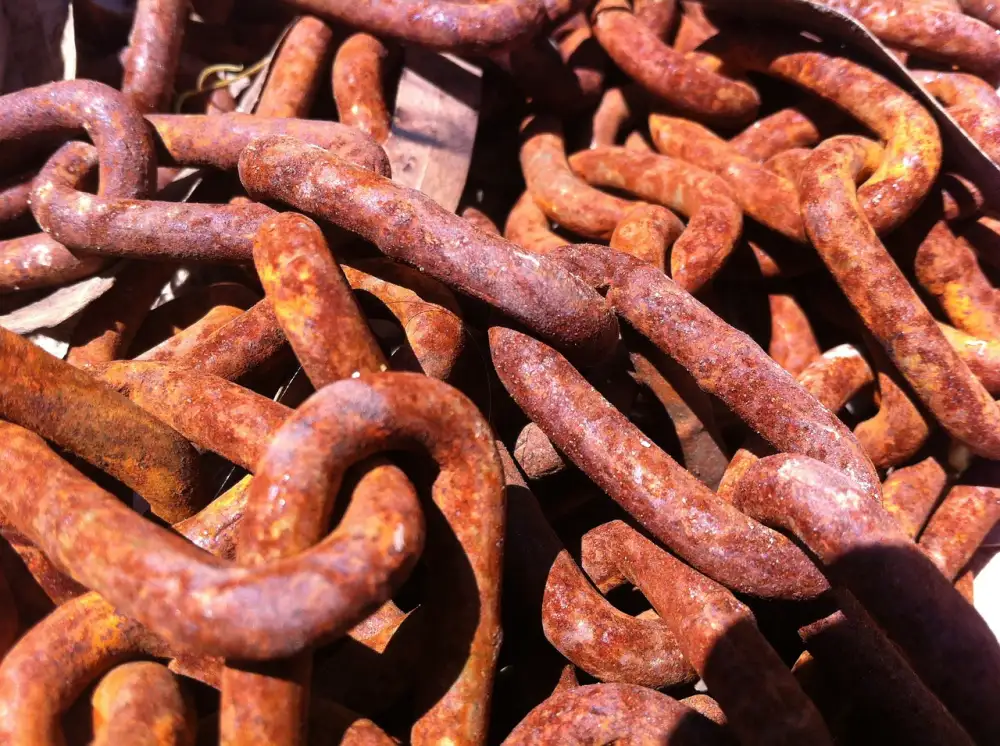Revive Your Rusty Cast Iron: Expert Tips on How to Clean and Restore

Cast iron cookware is known for its durability and ability to retain heat, making it a beloved choice for many home cooks. However, over time, cast iron can develop rust, which not only affects its appearance but also its performance. If you have a rusty cast iron pan sitting in your kitchen, don't fret! With the right techniques and supplies, you can easily restore it to its former glory. In this article, we will guide you through the process of cleaning and restoring your rusty cast iron so that you can continue to enjoy cooking with it for years to come.
Gather necessary supplies for cleaning
To effectively clean and restore your rusty cast iron, it is essential to gather the necessary supplies. Here's a list of items you'll need:
1. Steel wool or a stiff brush: These will be used to scrub away the rust and any other debris on the surface of the cast iron.
2. Dish soap: Opt for a mild dish soap that won't damage the cast iron's seasoning.
3. White vinegar: This acidic solution helps break down rust and makes it easier to remove.
4. Baking soda: A natural abrasive that can help lift stubborn rust stains.
5. Paper towels or clean cloth: These will be used for drying the cast iron after cleaning.
6. Cooking oil or lard: To season the cast iron after cleaning, you'll need a high-heat oil like vegetable oil or lard.
By having these supplies ready, you'll be well-prepared to tackle the task of cleaning and restoring your rusty cast iron cookware.
Preparing the cast iron for cleaning
Before you begin the process of cleaning your rusty cast iron, it's important to prepare it properly. Start by removing any loose rust or debris from the surface using a stiff brush or steel wool. Be sure to scrub gently to avoid damaging the cast iron. Next, rinse the cast iron with warm water to remove any remaining dirt or particles. Finally, dry the cast iron thoroughly with a clean cloth or paper towel to prevent further rusting. By taking these steps, you'll ensure that your cast iron is ready for the next stage of cleaning and restoration.
Removing rust from the cast iron
Removing rust from your cast iron is a crucial step in restoring its beauty and functionality. Start by scrubbing off any loose rust using a stiff brush or steel wool. For stubborn rust, create a paste by mixing equal parts baking soda and water. Apply the paste to the affected areas and let it sit for about 15 minutes. Then, scrub the rusted spots vigorously until the rust starts to come off. Rinse the cast iron thoroughly with warm water to remove any residue. Remember, patience and persistence are key when removing rust from your beloved cast iron cookware.
Cleaning the cast iron with a gentle scrub
Cleaning the cast iron with a gentle scrub is an important step in restoring its shine and removing any remaining rust. Start by using a non-abrasive scrub brush or sponge to gently scrub the surface of the cast iron. Avoid using harsh chemicals or abrasive cleaners, as they can damage the seasoning on the pan. Instead, opt for a mild dish soap or a mixture of baking soda and water. Scrub in circular motions, paying extra attention to any stubborn rust spots. Rinse thoroughly with warm water to remove all soap residue.
Drying and seasoning the cast iron
Drying and seasoning the cast iron is a crucial step in the cleaning process to ensure its longevity and prevent future rusting. After thoroughly rinsing off any remaining residue from the scrub, use a clean towel to dry the cast iron completely. Make sure to remove all moisture as any lingering water can lead to rust formation.
Once dry, it's time to season the cast iron. This involves applying a thin layer of oil or fat to create a protective barrier on the surface. You can use vegetable oil, shortening, or even lard for this purpose. Simply pour a small amount onto a paper towel and rub it all over the cast iron, including the handle and exterior.
Next, place the cast iron upside down in an oven preheated to around 350°F (175°C). This allows any excess oil to drip off and prevents pooling. Bake it for about an hour, then turn off the oven and let it cool inside before removing.
The heat from the oven helps bond the oil molecules with the metal, forming a natural non-stick coating called seasoning. This not only protects against rust but also enhances flavor and improves cooking performance over time.
Remember that seasoning is an ongoing process. The more you cook with your cast iron, the better seasoned it becomes. Regularly using and maintaining your cast iron will keep it in top condition for years to come.
By properly drying and seasoning your cast iron after cleaning, you'll revive its former glory while ensuring its durability and preventing future rusting. So go ahead, bring back that shine and get ready to enjoy many delicious meals with your restored cast iron cookware!
Tips for preventing rust on cast iron
1. Season regularly: The process of seasoning creates a protective layer on the surface of the cast iron, preventing moisture from reaching it and causing rust. Regularly season your cast iron by applying a thin layer of oil and baking it in the oven.
2. Store properly: After cleaning and drying your cast iron, make sure to store it in a dry place. Avoid stacking other cookware on top of it, as this can trap moisture and lead to rust formation.
3. Avoid soaking: While it's important to clean your cast iron after each use, avoid soaking it in water for extended periods. Instead, use minimal water and scrub gently with a brush or sponge to remove any food residue.
4. Dry thoroughly: After cleaning, ensure that your cast iron is completely dry before storing it. Use a cloth or paper towel to remove any excess moisture, then place it over low heat on the stovetop for a few minutes to evaporate any remaining water.
5. Use gentle utensils: When cooking with cast iron, opt for wooden or silicone utensils instead of metal ones that can scratch the surface and expose it to moisture.
By following these simple tips, you can keep your cast iron cookware in excellent condition and prevent rust from forming. Enjoy cooking with your revived cast iron for years to come!
In conclusion, restoring a rusty cast iron can be a rewarding and satisfying experience. By following the expert tips mentioned in this article, you can bring back the shine and functionality of your beloved cookware. Remember to gather all the necessary supplies, prepare the cast iron properly, remove rust using safe methods, and gently scrub away any remaining residue. After drying thoroughly, don't forget to season your cast iron for added protection. Lastly, always take preventive measures to keep rust at bay by storing your cast iron in a dry place and avoiding prolonged exposure to moisture. With proper care, your cast iron will continue to serve you well for years to come. Happy cooking!
Published: 11. 12. 2023
Category: Food



